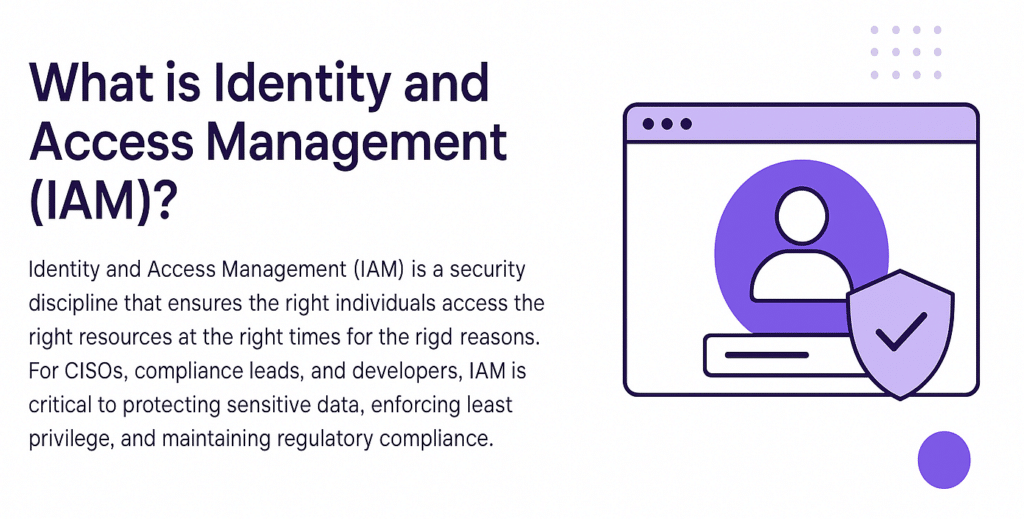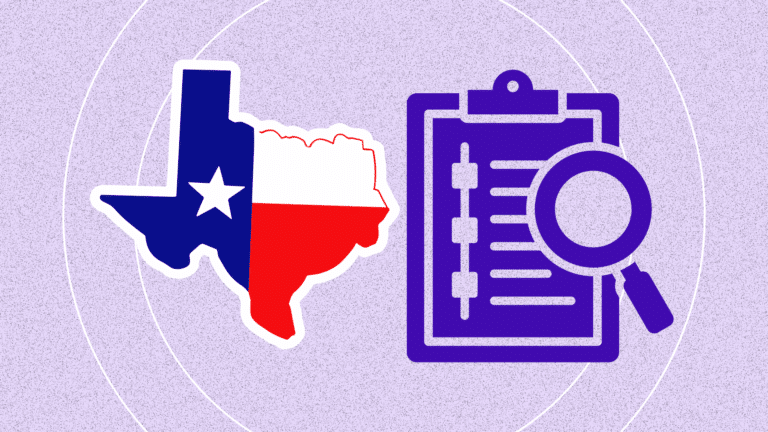Summary
Identity and Access Management (IAM) is a security discipline that ensures the right individuals access the right resources at the right times for the right reasons. For CISOs, compliance leads, and developers, IAM is critical to protecting sensitive data, enforcing least privilege, and maintaining regulatory compliance.

What Is Identity and Access Management (IAM)?
Identity and Access Management (IAM) is a framework of policies, processes, and technologies used to manage digital identities and regulate user access to systems, applications, and data. It helps organizations authenticate users, authorize access levels, and audit user activity to ensure secure and compliant operations.
How It Works
IAM typically involves three core functions:
- Authentication: Verifying a user’s identity using credentials like passwords, multi-factor authentication (MFA), biometrics, or single sign-on (SSO).
- Authorization: Granting or denying access based on policies, user roles, or attributes (e.g., job title, department).
- Auditing and Monitoring: Logging user access and changes to detect anomalies, support forensics, and demonstrate compliance.
IAM systems can be on-premises, cloud-based, or hybrid, and they often integrate with directory services (like Active Directory), HR systems, and third-party SaaS tools.
Who Does This Concern
Without robust IAM, organizations risk:
- Credential theft and account takeovers
- Insider threats from overprivileged accounts
- Compliance violations under frameworks like HIPAA, PCI DSS, and GDPR
- Shadow IT and uncontrolled access to critical data
Industries such as finance, healthcare, and government are particularly vulnerable due to high regulatory scrutiny and valuable data.
Real-World Examples
- Okta breach (2022): Hackers gained administrative access by exploiting weaknesses in an identity provider’s IAM system.
- Capital One (2019): A misconfigured IAM role in AWS allowed an attacker to exfiltrate sensitive data from cloud storage.
- Uber (2022): Social engineering led to a compromise of an IAM platform, enabling lateral movement across systems.
How Feroot Helps
Feroot’s Client-side Security Platform protects your IAM strategy from being undermined by browser-side threats like malicious scripts and session hijacking. By monitoring and controlling third-party scripts, Feroot helps ensure that identity protections extend all the way to the user’s browser—where modern attacks often begin.
FAQ
What are the main components of IAM?
Authentication, authorization, user provisioning, policy management, and auditing/logging.
What’s the difference between IAM and PAM (Privileged Access Management)?
IAM covers all identities and access control; PAM focuses specifically on securing and monitoring privileged accounts.
Is IAM required for compliance?
Yes. IAM is a core requirement in regulations like PCI DSS, HIPAA, GDPR, and ISO/IEC 27001.
Can client-side threats bypass IAM protections?
Yes. If attackers exploit browser-side scripts, they can hijack sessions or steal credentials even after authentication.


